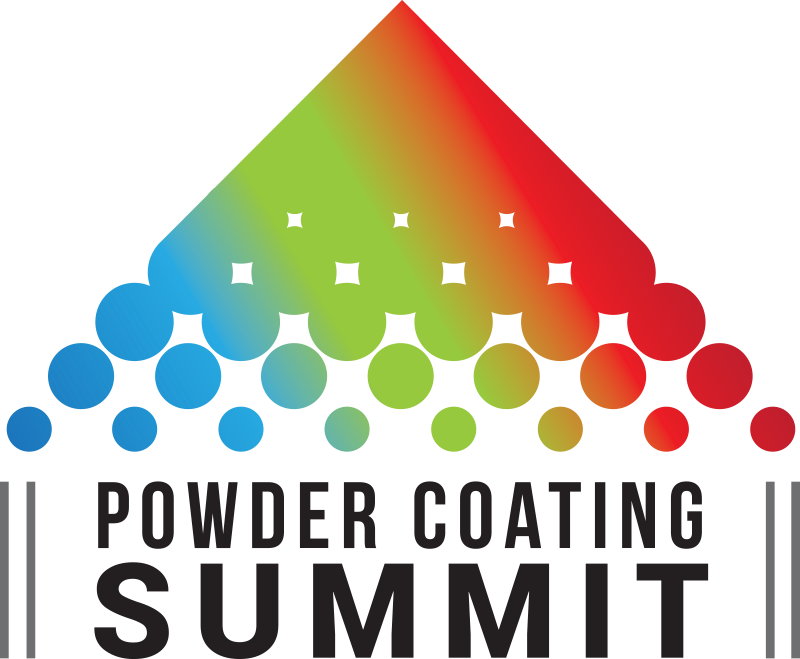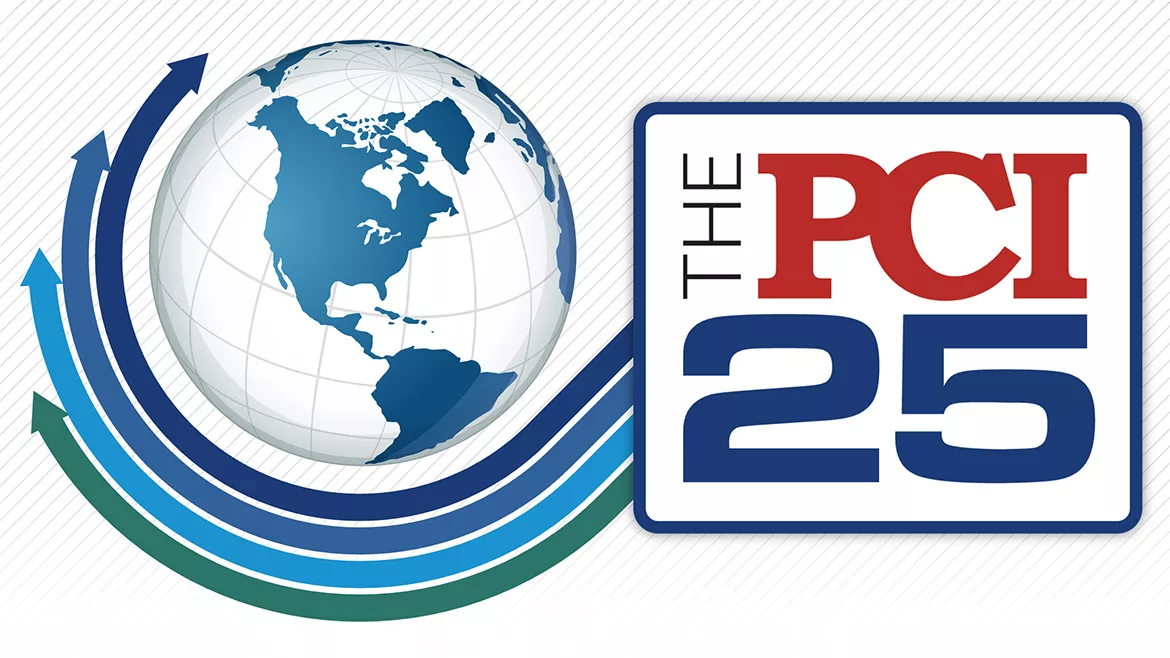A New Hardcoat for Automotive Plastics
The automotive industry loves the idea of plastics for their light weight, impact resistance, transparency, flame resistance and design flexibility. However, plastics are susceptible to three potential shortcomings: degradation when exposed to weather conditions for long periods of time, scratching or marring with little force, and susceptibility to chemical and/or solvent attacks. Any of these problems can lead to product failures or consumer complaints. Rently a new hardcoat technology has been developed that can overcome these issues and provide a longer-lasting protective surface for automotive exterior plastic parts.
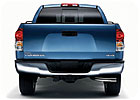
 As the world focuses on fuel efficiency, alternative fuels and the environmental impact of CO2 emissions, the automotive industry is looking for new solutions to reduce vehicle weight. The objective is to replace historically heavy parts with parts made from lighter materials that meet consumers’ demands for aesthetics and satisfy applicable government regulations.
As the world focuses on fuel efficiency, alternative fuels and the environmental impact of CO2 emissions, the automotive industry is looking for new solutions to reduce vehicle weight. The objective is to replace historically heavy parts with parts made from lighter materials that meet consumers’ demands for aesthetics and satisfy applicable government regulations.
In light of these goals, plastic parts present an attractive alternative. Plastics are relatively light and can have a potentially lower impact on the environment, since weight reduction typically leads to improved fuel efficiencies. Additionally, the versatility of plastic part processing provides the industry with design choices that support product differentiation for consumers. Plastics such as polycarbonate (PC) and polyacrylate demonstrated these benefits when they were selected to replace glass in headlight (Figure 1) and rear lenses.
However, plastics also present a major challenge to the automotive industry and its suppliers. Despite its many desirable features (light weight, impact resistance, transparency, flame resistance and design flexibility), plastic is susceptible to three potential shortcomings: 1) degradation when exposed to weather conditions (UV, heat, water) for long periods of time, 2) scratching or marring with little force and 3) susceptibility to chemical and/or solvent attacks. Any of these potential deficiencies may lead to product failures and/or consumer complaints that the plastic part looks old too soon - consumers expect vehicles to maintain their gloss. As a result, while plastics offer many desirable features for the automotive industry and its suppliers as alternatives for heavier parts, there is no “perfect material” available yet to address the fact that the part needs to last in the car over a long period and still look like new.
 As the automotive industry continues to improve plastics for new applications, silicone-based hardcoats have become an enabling technology. Silicone hardcoats potentially provide automotive designers and customers with an added degree of protection for the appliqués, mirror shells, sunroofs, vent grills and polycarbonate (PC) exterior trim sported by many of today’s cars and trucks. These plastic parts have traditionally been susceptible to fading and cracking after extended exposure to harsh in-use environments. Silicone-based hardcoats, particularly thermally cured hardcoats, have enabled many companies to achieve a durable, high-gloss finish, giving a longer lasting protective surface for automotive exterior plastic parts (see Figure 2). Hardcoats help enable the use of plastic without sacrificing durable aesthetics or performance.
As the automotive industry continues to improve plastics for new applications, silicone-based hardcoats have become an enabling technology. Silicone hardcoats potentially provide automotive designers and customers with an added degree of protection for the appliqués, mirror shells, sunroofs, vent grills and polycarbonate (PC) exterior trim sported by many of today’s cars and trucks. These plastic parts have traditionally been susceptible to fading and cracking after extended exposure to harsh in-use environments. Silicone-based hardcoats, particularly thermally cured hardcoats, have enabled many companies to achieve a durable, high-gloss finish, giving a longer lasting protective surface for automotive exterior plastic parts (see Figure 2). Hardcoats help enable the use of plastic without sacrificing durable aesthetics or performance.
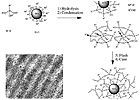
In general, the synthesis and thermal cure process of a silicone hardcoat can be summarized as shown in Figure 3. The final product of this reaction process is a highly crosslinked silicone resin/nanosilica composite that, when used in conjunction with the thermal cure silicone basecoat, typically has excellent adhesion to plastic (such as polycarbonate) and high resistance to abrasion and scratching. Patented UV absorbers provide the UV screening properties of the coating system. These UV absorbers are among the most photo-stable UV absorbing molecules currently known, and their use in the advanced thermal cure silicone coating system provides the coating with its exceptional performance characteristics.
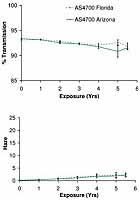 Weatherability studies are ongoing for the new hardcoat system. The graphs in Figure 4 show the light transmission and haze variation of samples of clear polycarbonate (Lexan† LS2-111) exposed in Florida and Arizona at 5 degrees, with application of the hardcoat topcoat varying from 4.5 to 8.5 microns and a primer coat thickness varying from 1.5 to 2.5 microns.
Weatherability studies are ongoing for the new hardcoat system. The graphs in Figure 4 show the light transmission and haze variation of samples of clear polycarbonate (Lexan† LS2-111) exposed in Florida and Arizona at 5 degrees, with application of the hardcoat topcoat varying from 4.5 to 8.5 microns and a primer coat thickness varying from 1.5 to 2.5 microns.
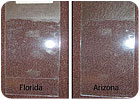 The data in Figure 4 and the analysis of samples such as those shown in Figure 5 demonstrate that the new hardcoat system retained excellent optical properties without cracking, delamination or adhesion loss after five years of “natural weather” exposure (Florida and Arizona).
The data in Figure 4 and the analysis of samples such as those shown in Figure 5 demonstrate that the new hardcoat system retained excellent optical properties without cracking, delamination or adhesion loss after five years of “natural weather” exposure (Florida and Arizona).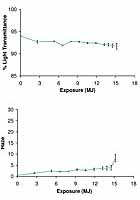 The weathering performance has been further supported by accelerated weathering test results (Figure 6). These data show that the light transmission and haze of samples of clear polycarbonate (Lexan LS2-111) coated with the new hardcoat topcoat and basecoat system can perform in a fashion similar to that observed in the natural Florida and Arizona testing. As in the natural weathering testing, adhesion was maintained throughout the accelerated exposure testing period. The data in Figure 6 show that PC coated with the new hardcoat system can retain its optical properties up to ~15 MJ/m2 of Xenon exposure, which is equivalent to five years of natural exposure in Florida (5 degrees south facing).
The weathering performance has been further supported by accelerated weathering test results (Figure 6). These data show that the light transmission and haze of samples of clear polycarbonate (Lexan LS2-111) coated with the new hardcoat topcoat and basecoat system can perform in a fashion similar to that observed in the natural Florida and Arizona testing. As in the natural weathering testing, adhesion was maintained throughout the accelerated exposure testing period. The data in Figure 6 show that PC coated with the new hardcoat system can retain its optical properties up to ~15 MJ/m2 of Xenon exposure, which is equivalent to five years of natural exposure in Florida (5 degrees south facing).

The new hardcoat system is already finding use in the automotive industry. Additional applications are likely as automakers seek new ways to reduce vehicle weight without compromising durability.
For more information, visit www.momentive.com.
Authors’ Acknowledgements
Thanks to LexaMar Corp., Boyne City, MI and USi Inc., Rockford, TN, for their assistance with this article.
*The new hardcoat system is supplied as a topcoat (AS4700) and basecoat (SHP470) from Momentive Performance Materials, Wilton, CT.
†Lexan is a trademark of SABIC Innovative Plastics IP.

The new hardcoat system is used on the Toyota® Tundra® garnish, among other applications. Photo courtesy of LexaMar Corp., Boyne City, MI. (Toyota and Tundra are registered trademarks of Toyota Jidosha Kabushiki Kaisha TA Toyota Motor Corp.)

Figure 1. A headlight coated with UV curable hardcoat silicone.
In light of these goals, plastic parts present an attractive alternative. Plastics are relatively light and can have a potentially lower impact on the environment, since weight reduction typically leads to improved fuel efficiencies. Additionally, the versatility of plastic part processing provides the industry with design choices that support product differentiation for consumers. Plastics such as polycarbonate (PC) and polyacrylate demonstrated these benefits when they were selected to replace glass in headlight (Figure 1) and rear lenses.
However, plastics also present a major challenge to the automotive industry and its suppliers. Despite its many desirable features (light weight, impact resistance, transparency, flame resistance and design flexibility), plastic is susceptible to three potential shortcomings: 1) degradation when exposed to weather conditions (UV, heat, water) for long periods of time, 2) scratching or marring with little force and 3) susceptibility to chemical and/or solvent attacks. Any of these potential deficiencies may lead to product failures and/or consumer complaints that the plastic part looks old too soon - consumers expect vehicles to maintain their gloss. As a result, while plastics offer many desirable features for the automotive industry and its suppliers as alternatives for heavier parts, there is no “perfect material” available yet to address the fact that the part needs to last in the car over a long period and still look like new.

Figure 2. Comparison between a hardcoated and non-hardcoated part. Source: Momentive Performance Materials Research Laboratories, Waterford, NY.

General scheme for synthesis of a thermal-cure silicone hardcoat. The TEM image on the lower left is of a cured silicone hardcoat. The nanosilica in the cured coating is shown in the dark spheres in the image.
Hardcoat Advances
Although thermally cured silicone hardcoats have long been available in the marketplace, more demanding performance requirements have led to the development of a two-component silicone hardcoat system consisting of a hardcoat topcoat and a basecoat.* This thermal-cure silicone coating system can provide exceptional protection from ultraviolet light exposure, excellent abrasion resistance and chemical resistance. The system typically produces a high-performance protective hardcoat for polycarbonate that imparts excellent protection for parts, exceeding the protective value of other coating systems currently available on the market.In general, the synthesis and thermal cure process of a silicone hardcoat can be summarized as shown in Figure 3. The final product of this reaction process is a highly crosslinked silicone resin/nanosilica composite that, when used in conjunction with the thermal cure silicone basecoat, typically has excellent adhesion to plastic (such as polycarbonate) and high resistance to abrasion and scratching. Patented UV absorbers provide the UV screening properties of the coating system. These UV absorbers are among the most photo-stable UV absorbing molecules currently known, and their use in the advanced thermal cure silicone coating system provides the coating with its exceptional performance characteristics.

Figure 4. Outdoor exposure data for 5 degrees (to horizon) south facing in Florida and Arizona. (Test data; actual results may vary.)

Figure 5. Photos of 5 degree weathering samples of polycarbonate coated with the new hardcoat system from Florida and Arizona testing. The top 20% of each panel was not coated and shows the effect of weathering exposure on uncoated PC. (Test results; actual results may vary.)

Figure 6. Accelerated weathering data. Samples were weathered according to the modified SAE J1960 protocol (Xenon light source with boro/boro filters). (Test data; actual results may vary.)

Table 1.
A Durable, High-Gloss Finish
The high-gloss appearance of the advanced hardcoat system can be maintained long-term due to its excellent abrasion resistance and superior chemical resistance. More importantly, this new hardcoat system appears to have the potential of lasting two to three times longer than other commercially available hardcoat systems. The performance characteristics of the new system are summarized in Table 1.The new hardcoat system is already finding use in the automotive industry. Additional applications are likely as automakers seek new ways to reduce vehicle weight without compromising durability.
For more information, visit www.momentive.com.
Authors’ Acknowledgements
Thanks to LexaMar Corp., Boyne City, MI and USi Inc., Rockford, TN, for their assistance with this article.
*The new hardcoat system is supplied as a topcoat (AS4700) and basecoat (SHP470) from Momentive Performance Materials, Wilton, CT.
†Lexan is a trademark of SABIC Innovative Plastics IP.
Looking for a reprint of this article?
From high-res PDFs to custom plaques, order your copy today!
